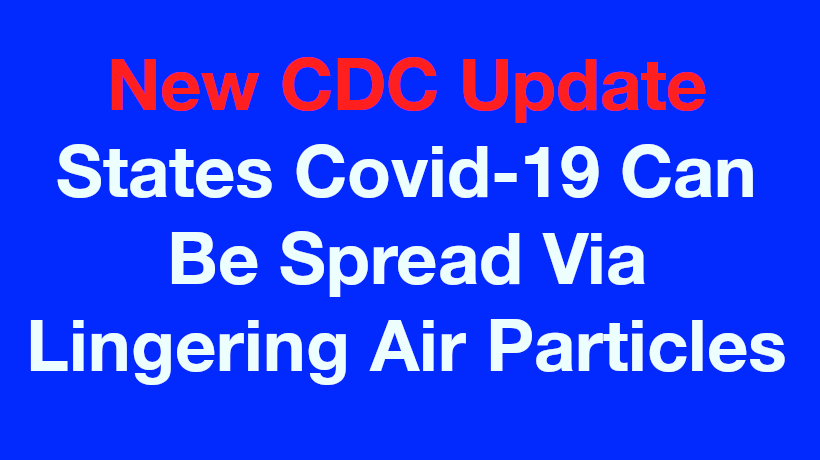We may have to be even more cautious about the coronavirus with the recent update from the U.S Centers for Disease Control and Prevention (otherwise known as the CDC). The CDC states that tiny particles may linger in the air and may be able to spread the coronavirus this way.
The revision to the CDC guidelines regarding COVID-19 was revised on Monday when the CDC also acknowledged these tiny airborne particles may be infectious and may also easily travel beyond the social distance guidelines of six feet. However, the CDC also adds that this is not the main way to contract COVID-19.
Before the update on Monday, the guidelines stated by the CDC said that the virus is mainly spread through respiratory droplets from people who are in close contact with one another (less than six feet). This was one of the reasons why it was mandated that individuals stay six feet apart from each other at all times, and when it wasn’t possible to do so wear a mask to reduce the transmission of the contagious virus.
These droplets, the agency revealed, have the capability to cause infections when they are inhaled through either the nose or mouth.
Rooms with “inadequate ventilation” were where the transmissions occurred, the CDC said.
They explained that in situations where rooms did not have enough ventilation and where individuals breathed heavily, the “infectious smaller droplets and particles became concentrated enough to spread the virus to others.”
In a room without adequate ventilation, a sneeze may be able to travel 26 feet from the starting distance of the sneezer. An infographic on the Wall Street Journal cautions that “the cloud may travel as far as almost 20 feet after a cough, and about 6 feet after exhalation, according to the MIT researcher.” The infographic continues to assert that even small aerosols (3 microns or less) may linger for hours after it is released into the air.
Airborne transmission is not an occurrence that is specific to one location or situation. It happens in normal situations, as well. Joseph Allen, director of Harvard University’s Healthy Buildings program, says, “We’ve seen this in a restaurant, on a school bus, at a camp.”
While there is still more to research about how many airborne transmissions may be able to help in the spread of the virus, there are a few solutions.
Some CDC guidelines are still in places, such as the ones that require everyone to wear masks, reduce crowd sizes, and administer better air quality and ventilation in buildings.
Sources:



